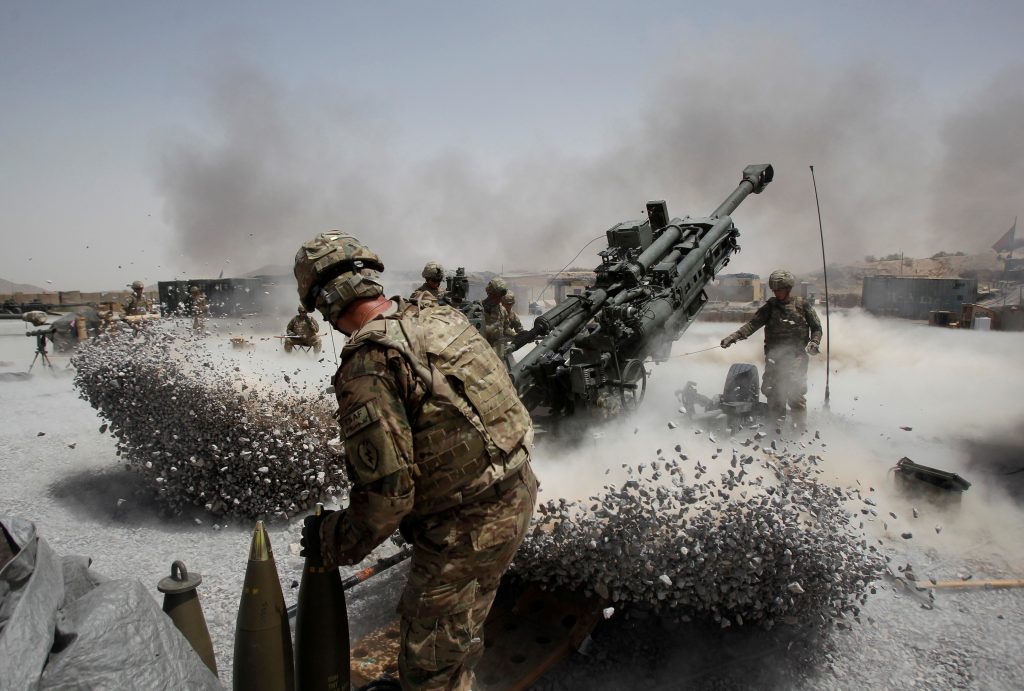How the West destroyed Afghanistan
DIDpress: The Socialist Worker argued in a detailed article that the US and Britain invaded Afghanistan in 2001 under the pretext of bringing “freedom,” “democracy,” and “women’s rights.” Instead, they installed a corrupt regime composed of warlords, criminals, and drug traffickers, paving the way for the Taliban’s return.

The Afghan data leak scandal highlights the trail of destruction left by the West’s 20-year occupation of the country.
The United States and Britain invaded in 2001 under the guise of bringing “freedom”, “democracy” and “women’s rights”. They installed a corrupt regime of warlords, gangsters and drug traffickers and paved the way for the return of the Taliban.
The West’s occupation plunged Afghans into poverty. As the US and British “liberators” left in 2021, the country was ranked the world’s 169th poorest out of 189 on the UN’s Human Development Index.
Afghanistan had already been ravaged by more than two decades of war before the West’s invasion. From the 1970s, it was marked by civil wars, a brutal invasion by Stalinist Russia and the rise of rival warlords.
The West’s occupation did not free women—it worked hand in glove with forces that suppressed women’s rights.
One Afghani woman diplomat said, “Supporting women is something people pay lip service to, but money and aid never get to them. It’s eaten by corruption, and the monster of war.”
The diplomat was giving evidence to the UN Assistance Mission in Afghanistan eight years after the invasion. It reported, “The current reality is that the lives of Afghan women were seriously compromised by violence, and women were denied their most fundamental human rights.”
The West dressed up the invasion as a “humanitarian intervention” on behalf of Afghans. This was propaganda used to justify the US’s and Britain’s imperialist aims. As one senior British intelligence officer put it, “It’s always helpful for governments who want to get the Guardian readers of the world on board to have a humanitarian logic.”
The Al-Qaeda terror attacks on the Twin Towers and the Pentagon on 9/11 had left the US reeling.
The then US president George W Bush saw a need to respond with overwhelming military force. Where did he choose? The powerful US ally Saudi Arabia, where Al-Qaeda leader Osama Bin Laden and most of the hijackers had come from?
No. The US chose to make an example of one of the world’s weakest and poorest countries, Afghanistan. Bin Laden was holed up in Afghanistan. But its rulers, the Taliban, had no connection to Al-Qaeda or 9/11.
Afghanistan was the first victim of a much bigger project—“The Project for the New American Century”.
The US was the world’s only military superpower after the end of the Cold War in 1991. But sections of the US ruling class saw that they would face economic competition from rising powers, such as China, in the coming decades.
They sought to overcome relative economic decline through a brute assertion of military force—and dominating the Middle East and its vast oil reserves was key.
The US didn’t need to grab the oil for itself, but it wanted control over this key resource in global capitalism. That way it aimed to send a signal to rivals that it was still top dog in the world.
The Bush administration was obsessed with invading Iraq—which it did in 2003—and saw Afghanistan as a sideshow.
But Bush saw 9/11 as a useful pretext to launch a wider “War on Terror”—in reality, a war to maintain US dominance in the Middle East. So Afghanistan became US imperialism’s first victim in this battle for control.
The US and Britain were forced to withdraw in 2021 and their puppet regime collapsed and the Taliban retook control. They sanctioned the new regime, causing further poverty and hardship for Afghans.
The bloody legacy of the West’s occupation lives on.
The ‘special relationship’, a puppet regime and other British crimes
The British state played a filthy role in Afghanistan—all in the name of the “special relationship” with the US. The then Labour prime minister Tony Blair was determined to secure Britain’s place in the world as a junior partner to US imperialism.
In his memoirs published in 2010, the war criminal wrote that he regretted that the US and Britain hadn’t invaded Syria and Iran too.
For Blair, the special relationship had a “blood price”. The US had to know that Britain would “be there when the shooting starts”, he explained. That “blood price” would be paid by the Afghan people through a regime of murder and torture.
Britain operated a secret prison at Camp Bastion, where it held Afghans indefinitely and without charge. And it supported the US in running secret prisons for unlawful detention and torture.
The most notorious prison was the Bagram airbase or “The Hangar”.
Tina Foster is a US lawyer who argued several cases on behalf of Bagram detainees. “Bagram was worse than Guantanamo” prison camp and “has always been a torture chamber”, she says.
One former British special forces officer said that “hundreds” of individuals have been detained by British forces in Afghanistan and Iraq.
They were “routinely” handed over to US forces in the knowledge that they would be tortured. And yet, those who ran such hell holes of abuse had the gall to claim that they invaded Afghanistan on “humanitarian grounds”.
The puppet regime of Hamid Karzai was corrupt from top to bottom. It pillaged the Afghan people, international aid agencies and its allies—and fuelled an increase in support for the Taliban.
But the CIA, the US spook agency, blocked any attempts to curb corruption because they too were bribing the Karzai regime.
Eventually, Karzai was forced for the sake of appearances to appoint an anti-corruption tsar. There was no better man than Izzatullah Wasifi. He’d once been arrested in Las Vegas trying to sell heroin worth $2 million.
This regime had no popular support and collapsed once the West was forced to withdraw.